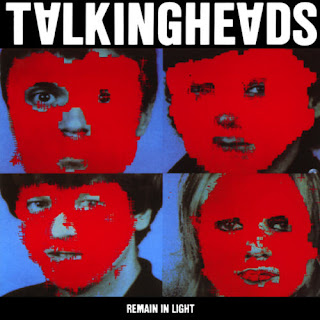Many of Wire's songs were written as acts of speculation: what would happen if you rewrote "Johnny B. Goode" using only one chord? (The answer: debut album Pink Flag's title track).
Wire - Pink Flag - 1977
Singer/guitarist Colin Newman composed "106 Beats That" on an agonizingly delayed train journey between Watford and London, during which he devised a complicated system of correspondences between the names of railway stations and guitar chords. Bassist Graham Lewis's words for "106 Beats That" came out of a failed attempt to write a lyric that contained only a hundred syllables: 'It turns out it's got one hundred and six, but that doesn't matter, because you've created a process'.
Wire - 106 Beats That - 1977
Newman wrote a lyric about a lion tamer that Lewis mostly didn't care for, so he deleted all the bits he didn't like and replaced them - hence the song's eventual title, "Ex-Lion Tamer". Dismembering sequential narrative was a favourite Lewis tactic.
Wire - Ex-Lion Tamer - 1977
Their sophomore album Chairs Missing reinvents psychedelia while preserving the group's signature quality of monochromatic minimalism.
The guitars have an ultra-vivid gloss; "French Film Blurred" is a vitreous shimmer, while the lyrics came from Newman's attempt to watch a foreign movie on a TV with reception so poor he couldn't read the subtitles, forcing him to make up the dialogue.
The guitars have an ultra-vivid gloss; "French Film Blurred" is a vitreous shimmer, while the lyrics came from Newman's attempt to watch a foreign movie on a TV with reception so poor he couldn't read the subtitles, forcing him to make up the dialogue.
Wire - French Film Blurred - 1978
On "Being Sucked in Again" even the bass emits an unnatural glow, like fluorescent marble.
Wire - Being Sucked in Again - 1978
Producer Mike Thorne had brought back state-of-the-art effects units from America: MX-R distortion, flanges, and new sound effects operating in what Thorne calls 'the time domain, like delays and chorus pedals'. Says Newman, 'The MX-R unit provided this very clean and un-heavy metal distortion. "I Am The Fly" is literally that sound - like glass. On Chairs Missing we were just streets ahead when it came to guitar sounds'.
Wire - I Am The Fly - 1978
For a towering post-punk masterpiece, though, Chairs Missing received a surprisingly mixed reception in 1978. The NME's Monty Smith accused the group of degenerating from Pink Flag to Pink Floyd in less than a year. But, apart from the odd Electric Prunes-like guitar sound, the only true sixties throwback on the album was the beguilling, Byrds-like "Outdoor Miner" - the closest Wire ever got to a hit single - with its honeyed harmonies and idyllic, chiming chords. Dense with assonance and internal rhyme, the lyric to "Outdoor Miner" sounds like sensuous nonsense, a typical example of Wire revelling in language for its melt-in-your-mouth musicality rather than meaning. (Typical line: 'face worker, serpentine miner, a roof falls, an underliner, of leaf structure the egg timer'.) In fact, it was obliquely inspired by a Radio Four wildlife programme, from which Lewis learned about a bug called the serpentine miner, which lives inside holly leaves and eats chlorophyll.
Wire - Outdoor Miner - 1978
"Marooned" was a fantasy vignette about an Arctic castaway resigned to his fate - 'as the water gets warmer my iceberg gets smaller'.
Wire - Marooned - 1978
By their third album, 154, Wire's music was becoming almost oppressively textured.
The opener, "I Should Have Known Better", sung by Lewis in a doomy baritone, expressed animosity with steely precision: 'I haven't found a measure yet/To calibrate my displeasure yet'.
Wire - I Should Have Known Better - 1979
Newman's "Two People in a Room" depicted emotional conflict as stratagem and manoeuvre ('Positions are shifted/The cease-fire unlifted') and elliptically evoked the disintegration of Wire itself into rival aesthetic camps.
Wire - Two People in a Room - 1979
All densely overdubbed guitars and stacked vocals, "Map Ref. 41° N 93° W", the single off 154, was majestic, but its beauty was oddly remote, just like the cartographer's eye-view lyric, inspired by a flight over Iowa. As pop choruses go, 'Lines of longitude and latitude/Define and refine my altitude' doesn't exactly scream, 'chart potential'.
Wire - Map Ref. 41° N 93° W - 1979
Graham Lewis described Pink Flag's "Lowdown" as 'an experiment in deconstructed funk, almost a critique of funk - very dark and slowed down, to the point of non-funkiness'.
Wire - Lowdown - 1977
When the four reunited in 1985 to have a second crack at being Wire, they rededicated themselves to the monolithic, funkless force rhythm they nicknamed 'dugga'. The first song they wrote after five years apart was called "Drill". And it sounded like one.
Wire - Drill 1986

















